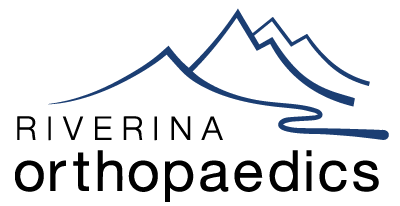The patella (kneecap) is located at the front of the knee joint and is connected to the quadriceps (quads) muscle above by the quadriceps tendon and the front of the tibia (shinbone) below by the patella tendon. It acts as a pulley and allows the quads to pull the knee joint out straight, for instance when kicking something, climbing up or down stairs and even standing still. The patella moves around the end of the femur (thighbone) and this is known as the patellofemoral joint.
When viewed from the front, the knee joint has a slight bend and as a result the patella lies slightly to the outside of the knee. To keep it moving in the correct position there are a number of factors including the shape of the patella and femur, the alignment of leg, the ligaments on each side of the patella and the strength of the quadriceps muscles. Where these structures are abnormal or have been injured or damaged, the patella can move out of its normal path, a condition called patellofemoral instability. Different patients may have different risk factors for PF instability.
Instability can range from a feeling that the patella “clunks” on certain movements, to a patella that jumps out of position and then jumps back in (subluxation), to a patella that jumps all the way out and does not return (dislocation). During this process the cartilage on the back of the patella or front of the femur may become damaged – in the short term, this can cause pain and swelling but in the longer term this may cause permanent damage, resulting in osteoarthritis later in life.
Instability can occur in very young children, but the majority of cases occur in teenagers and young adults and can be very disruptive to school and sporting activities.
Frequently Asked Questions
How is PF instability investigated?
Following a detailed consultation and thorough physical examination your surgeon will identify the likely risk factors in your case and may request additional investigations to help direct your treatment. These may include:
- X-rays to identify the shape and alignment of the bones
- MRI scan to look for ligament or cartilage damage
- CT scan to measure the rotation of the femur and tibia
How is PF instability treated?
Once a full diagnosis is made, your surgeon will work with you to address your particular risk factors. Some of these cannot be changed, some will improve on their own and some will benefit from treatment. This may include:
- Physiotherapy – this is the mainstay of treatment for the majority of patients with PF instability. By strengthening the quads and rehabilitating the knee minor instability can be corrected. Physio treatment is important even when instability is serious enough to require surgery both before and afterwards
- Bracing/strapping – usually used in conjunction with your physiotherapist. Some patients require this for daily activities, some only for playing sports.
- Activity modification – you may need to pause some sporting activities to allow your knee to recover fully
- Medications – anti-inflammatory drugs may be useful to help minimise swelling and pain after knee injury
- Surgery – the majority of PF instability patients who require surgery undergo arthroscopic (keyhole) surgery with small skin cuts used to pass a camera and surgical instruments into the knee. The ligament holding the patella to the femur on the inside part of the knee may be strengthened by using one of the small hamstring tendons – a procedure known as Medial Patellofemoral Ligament (MPFL) reconstruction. More rarely, surgery may be required to change the alignment of the knee by cutting the femur or tibia – a procedure known as an osteotomy of which there are several types.
How long will I stay in hospital?
Depending on the procedure, you will usually be able to go home the same day but some patients may stay overnight.
What kind of anaesthetic would I have?
There are various types of anaesthetic techniques used in modern practice and your anaesthetist will discuss which would be recommended in your case. Most patients have a light general anaesthetic and are asleep for their surgery. Different types of pain relief are used in combination after surgery to minimise your discomfort.
What is the recovery period?
You will be mobilising with crutches initially and should be able to fully weight-bear in most cases. If osteotomy surgery has been performed you may be restricted in weight-bearing for up to 6 weeks. Realistically most patients would be able to do light work at the 6 week mark but would need to wait 8-12 weeks before undertaking heavy physical work. Return to sport would be guided by your physiotherapist but would be 3-6 months.
What are the risks?
All surgical procedures can carry some risk and your surgeon will carefully explain these at the time of your consultation.
Does PF instability re-occur?
Whilst the aim of treatment is to prevent this, there are sometimes patients who may become unstable again, particularly if they re-injure the knee. Additionally in very young patients, smaller procedures may be performed to buy time until a definitive procedure as a teenager.
This page is a brief overview and not designed to be all-inclusive. If you have any further queries, please contact us.


